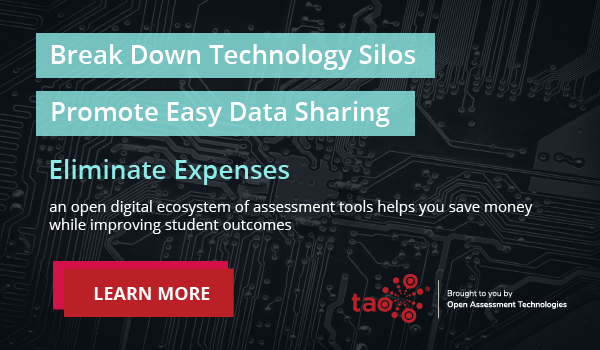The journey towards integrating digital assessments into the classroom setting is often perceived as an overwhelming task by teachers and, especially, students. You might be wondering how you can leverage the benefits of this digital and interconnected era to create a successful environment for digital assessments in your classroom. If this question has been troubling you, rest easy. You’re not alone. This article offers a straightforward three-step strategy to assist you in effectively introducing digital assessments.
Start Small & Ease Students Into The Digital Realm
Don’t rush to revamp your entire assessment system overnight. Start by testing the waters with one or two digital tasks, then gradually expand. This approach gives you and your students time to adjust and helps identify potential glitches.
Remember, your students are the ones at the receiving end of these assessments. It’s crucial for them to feel comfortable with this new learning method. They may feel unsure at first, and that’s okay.
You might face some resistance initially. But patience and understanding are key. Instead of diving head-first into digital assessments, begin by taking smaller steps. Start with a few simple, low-stakes digital assignments or quizzes. Let the students explore, make mistakes, and learn without pressure. Our recent eBook, The Decision Maker’s Checklist for Rolling out End-to-End Assessment Technology can help you get started.
Make sure to keep communication open. Explain why you’re adopting digital assessments and show them how they can enhance their learning experience, like instant feedback. Additionally, consider creating handy resources, like step-by-step guides or video tutorials, to help them understand the process better. They should also have access to tech support for any issues. Remember, not all students can access digital devices or a stable internet connection. So, ensure your digital shift is inclusive and doesn’t leave anyone behind.
Equip Educators With The Necessary Tools & Training
To scale your small experiments, you must equip all the educators with the necessary tools and training. This means not only giving them access to digital platforms for assessment but also training them to use these tools effectively.
Invest in user-friendly platforms to ease the transition. These should ideally include features like automatic grading, instant feedback, and customization for different learning styles.
Training is just as necessary. Even the most user-friendly platform can fall flat if educators don’t know how to use it; the buy-in from educators is key here. Training should address the technicalities of using digital assessment tools and best practices for digital assessment design.
Switching to digital assessment in the classroom requires a shift in mindset. Teachers must understand that digital assessments aren’t just traditional assessments on a digital platform. They offer an opportunity to leverage technology for more personalized, engaging, and inclusive assessments.
Incorporate A Variety Of Digital Assessment Methods
Introduce various digital assessment methods to cater to diverse learning styles. Traditional assessments often favor certain types of learners. Digital assessments level the playing field.
Add variety to digital assessments in different ways. Multiple-choice quizzes are simple and efficient, but they shouldn’t be the only method. Open-ended questions encourage critical thinking, while multimedia tasks engage visual or auditory learners.
Adaptive assessments adjust the difficulty level based on the student’s performance, providing a more accurate picture of their progress. Gamified assessments make the process more engaging and less stressful, and collaborative assessments promote teamwork and develop critical evaluation skills.
Wrapping It Up
There you have it – three simple strategies to introduce digital assessments in your classroom. The journey can be challenging, but with careful planning, you can make it a success.
Remember, each classroom is unique. Adapt these strategies based on your needs and context. With the right approach and commitment, the transition to digital assessment can lead to enhanced learning and growth.
The shift to digital assessments is not merely about substituting pens and paper for screens and keyboards. It’s about leveraging the power of technology to reimagine assessments, unlocking many benefits to enhance your student’s education. Here are some of the advantages that digital assessments can offer:
- Efficiency: Digital assessments can save both teachers and students time. Automatic grading speeds up scoring and feedback, allowing teachers to focus more on designing learning experiences.
- Instant Feedback: Digital assessments provide instant feedback, helping students understand their performance immediately, helping knowledge retention, and improving application skills.
- Personalization: Digital tools allow for personalized learning. They adapt to each student’s pace, style, and ability.
- Accessibility: For students with physical disabilities, digital assessments make a significant difference thanks to the many accessibility tools available in a system. Features like text-to-speech, screen reader compatibility, keyboard navigation, high-contrast mode, etc., can be offered to level the playing field.
- Data Collection and Analysis: Digital assessments generate valuable data about student performance. Teachers can analyze this to gain deeper insights into student progress, tailoring instruction more effectively.
- Engagement: Digital assessments, especially those with multimedia elements or gamification, can increase student engagement, making the assessment process interactive and enjoyable.
- Versatility: Digital assessments can take various forms, offering various methods to assess student learning and understanding.
This list is far from exhaustive, but it provides a glimpse into the potential benefits that digital assessments can bring into your classrooms.
Take the plunge, and remember: you’re not alone on this journey. As classrooms around the globe become more digitized, let’s embrace this change together and get the rewards of this digital revolution.


